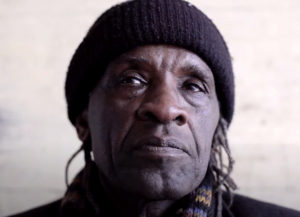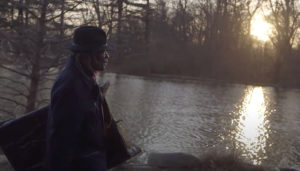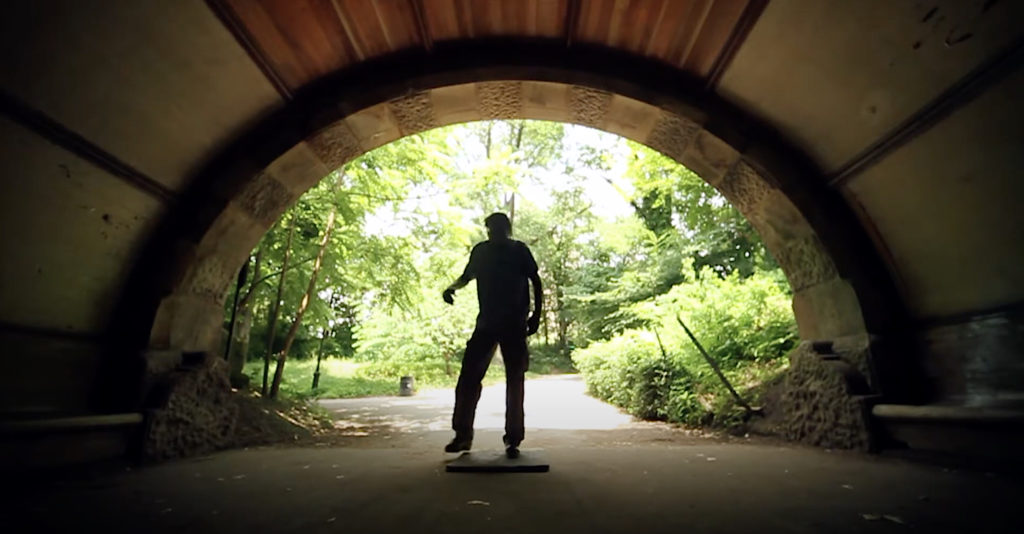“He Who Dances on Wood” (2016) is a documentary short, under six-minutes long, produced and directed by Brooklyn-based, Mexican-Ethiopian filmmaker Jessica Beshir.
You can watch it for free on YouTube.
The backstory is that many years ago Fred Nelson was on the New York City subway with his young son, when the son disappeared. Turned out the kid had become mesmerized by some tap dancers who were performing on the train and stayed behind.
So Fred bought his son a pair of tap shoes, and while he was at it, he bought himself a pair, too. The son never followed through. Fred’s own shoes remained in the closet until quite some time later when he was moving and came upon them again.
A lightbulb went on.
Fred started taking lessons but he didn’t have a place to practice. So he found a piece of wood and started taking it to Brooklyn’s Prospect Park. Enter Beshir who, in a conversation also available on YouTube, describes how the documentary came about.
“When I first moved to Brooklyn I always used to see this man in the park. He was holding something under his arm and he had an amazing sense of purpose.”

One day she saw that what he was holding was a piece of wood.
Fred had started out practicing on the park’s big lawn, where he felt free to make the sounds and movements that he liked. But one day it rained. So he ran under a bridge tunnel and began dancing there. The echoes, both of his tapping and the sounds he made while dancing, reverberated. He loved the effect. And the tunnel became “his” place.
Says Beshir, “When I first saw him dancing under the tunnel, I was so in awe. He wasn’t doing a show. No one else was there. It was maybe 6 a.m. He was just enjoying himself so much.” Over time she started getting closer and closer and closer. What made her want to make the film was Fred’s passion: that he seemed to have made a pact with himself.
“He was there every single day. Not on a stage, but for himself. For his practice. And it was right around the time in my life that I had started to want to make a film.”
Beshir realized that she had to develop a similar purpose, rigor, and devotion. So she got herself a camera. She developed a relationship with Fred. She got his permission to film.
And she made “He Who Dances on Wood,” a luminous homage to making do with what’s at hand, to the vocation of art, and most particularly to the glorious Fred Nelson.
“His dancing connects him to the universe around him,” says Beshir. “There’s a spiritual aspect. He’s a very graceful, sweet, beautiful person.”

Much of the film is shot in slow motion, showcasing the grounded simplicity of shoes, fallen leaves, a piece of battered parquet flooring that can hardly measure more than a square yard.
The park is shown in every season: the filtered sunlight of spring, the trees changing color in fall, geese on the iced-over lake in winter.
Rhythm, Fred maintains, is “all through” the world.
“There's nothing that gives me more joy than when I’m in there tap dancing. It’s a way of talking, speaking — the wood has a voice too,” he says.
Exuberant, loose-limbed, simultaneously utterly focused and utterly free, Fred seems to channel the musical heartbeat of the universe.
“Dancing cleans me out,” he says. “It gives me my personal strength.”
Pedestrians amble through, a bike wheels slowly by, but Fred seems to have the tunnel, and by extension, the park, to himself.
“I picked up a lot of things later in life. If I had started earlier, if I’d had my head on straight, or whatever. … But I guess it’s probably mean for me to learn things in my older age, just as I’m about to leave the world. There must be a reason for it, but I don’t know what it is.
“When the right thing comes along something happens inside of us. I may not know it, but something happens inside of me. There’s a need to speak to God.”

Fred has no need, however, to evangelize, nor to tell others what to do. “I’ll just be silent because I know I’ve found my joy.”
To Beshir, the best thing about the film is Fred’s attitude toward life. No matter how old we are, we can be inwardly vital, we can learn, we can embody hope.
“You don’t have to be on Broadway. You can have so much joy tapping on a piece of wood under a tunnel.”
“I learned so much from him,” she continues. Whatever you do, you want to bring joy. I wanted to make that my own practice. He taught me to be self-determined. That was my film school.”
Or as Fred sums up: “That’s a glorious story to have a rhythm that can go around the world — and come back to you.”

